Brew With Us ESSENTIALS – specialty malts and other grains

That special something
Base malts make up the majority of your malt bill, with crystal and roasted malts in support, but there’s always room for a special guest spot – or an alternative headline act!
A festival of flavour awaits…
What connects acidulated malt, rauchmalt, and melanoidin malt? One answer is that these are all “specialty malts”: grains with special brewing properties or exciting flavours for your brew. (There’s also another connection – find out more below!)
Utility malts
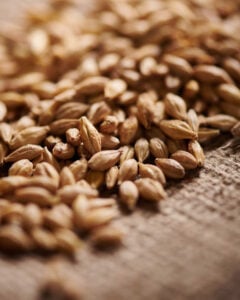
These malts and grains don’t typically pack much flavour, but they’re useful for their brewing properties. For example, acidulated malt has a higher level of natural lactic acid than other malts, which means you can use it to help adjust your mash pH.
Dextrin malt and chit malt have high levels of proteins, which helps build foam for a longer lasting head on your beer. The particular proteins in these malts can also help with oxygen stability. This is useful when brewing with large amounts of oats, which are high in manganese, a very oxygen-sensitive metal.
High Diastatic Power malt is made from 6-row barley, meaning it has a very high level of enzymes needed to convert sugars in the mash. HDP malt is vital for making grain spirits like whisky.
Special flavour malts
If you want flavour fireworks, or just a hint of something bigger, these are the malts to turn to. Smoked malts, whether traditional rauchmalt smoked over beechwood, or peat smoked for a whisky-like flavour, can bring subtle depth when used sparingly, or conjure up bonfires and barbeques in higher quantities. Even just a small percentage of smoked malt can be noticeable in your final product, so be careful!
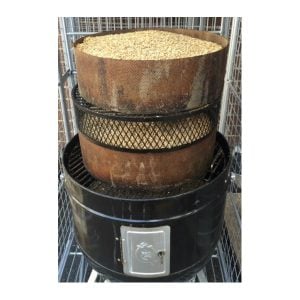
Aromatic malt and Imperial malt represent British takes on the Munich malting process, bringing the characteristic depth of flavour with their own distinct profiles. Similarly, Melanoidin malt can be thought of as like a super-charged Munich. “Melanoidins” are the flavour compounds that give Munich its deep, extra malty character, and melanoidin malt packs in even more of these for an even richer flavour. Biscuit malt works along the same lines but with a bready, toasted flavour. As with smoked malts, you won’t need much of these grains in your malt bill to get their supersized flavours, and unlike the Munich and Vienna malts that inspired them, these special malts don’t have enough diastatic power to be used as base malts.
The purity laws

You may have heard of the Reinheitsgebot: the famous Bavarian purity laws. The Reinheitsgebot dates from the 1500s and originally stated that only barley, hops, and water could be used to make beer – with yeast not being mentioned! It wasn’t that brewers didn’t know about yeast, more likely that they saw it as more of a living piece of equipment – inseparable from a barrel for fermenting – rather than an ingredient to be bought in. The Reinheitsgebot only applied for a short period of history, but their impact is still felt through German brewing culture.
The original motivation for the laws was mostly economic, keeping supplies of wheat and rye reserved for bakers rather than being bought up by breweries. However, they brought some challenges for brewing. Following the laws strictly meant that additives couldn’t be used for colour, pH adjustment, clarification, etc., so brewers and maltsters had to come up with hop- and barley-based replacements. Acidulated malt (“sauermalz”) is one such solution: a barley product that lowers mash pH.
So if your answer to the question at the top of this chapter was “they’re all allowed under the Reinheitsgebot”, you were right! Acidulated malt, rauchmalt, and melanoidin malt are all German specialty malts that fully conform to those historical laws.
Alternative grains
So far we’ve only talked about barley, but there are dozens of other grains you can brew with. Some of these can be malted, while others are used raw (when they are known as adjuncts). Like the specialty malts, almost all of these grains are used with barley rather than entirely on their own.
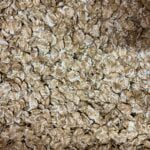
Wheat is one of the most commonly used grains after barley, and just like barley you’ll find malted, crystal, and even roasted varieties. Wheat has a lighter flavour than barley and contains lots of foam-positive proteins, so in addition to classic wit and weizen beers, you’ll find wheat in some amount across many different beer styles.
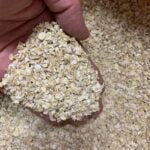
Oats have a rich, creamy flavour that works brilliantly in darker beers, balancing roasted notes. Oats have also become part of modern pale ales, where oat smoothness gives a platform for fruity hop flavours. Unmalted oats can be very sticky in the mash, so mixing some oat husks, either separately or from malted oats, can be a good idea. Oat husks won’t add any flavour or sugars of their own, but they help break up the mash and provide natural channels for the wort to drain off.
Rice is almost flavour-neutral when used in beer, which can help provide lightness in lagers and accentuate the crispness, though if overused it can make your beer taste thin. Rice hulls are used just like oat husks to break up mashes – they don’t add any flavour or fermentables, so you can throw them in without worrying.
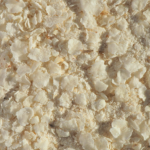
Terrified wheat!
Oops… the most common spelling mistake in writing about ingredients has crept in again! Wheat is very commonly torrefied for use in brewing, as are some other grains. But what on earth does that mean?
The simplest way to think about it is to think about popcorn or rice crispy cereal. The raw wheat grains are heated until the starches break down. As this happens, the grains expand and become soft. Unmalted and unprocessed wheat is very difficult to mash, but the heating process with torrefied wheat makes it much easier to deal with.
Other grains, including barley, can be torrefied. The heat process in making torrefied grains destroys any diastatic enzymes, so like always, you need some base malts in your mash.
You can also get flaked wheat, oats, barley etc. These have been pressed through hot rollers. The heat breaks down the starches in a similar way to torrefying, so these grains are also easy to use in the mash. Confusingly, some grains are flaked (with the hot rollers) after being torrefied (puffed up)! Again, the heat breaks down the diastatic enzymes so these grains have to be used alongside base malts. Flaked barley is often found in stouts, where it adds a fluffy smoothness from the flaking process.
There is only a very tiny flavour difference between flaked and torrefied grains. Torrefied grains are more traditionally used in British ales, and flaked grains are used in Belgian and other continental beers.
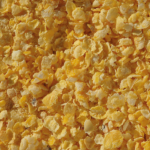
Maize (corn) is part of many classic American beers, and just like rice it lightens body and colour. Cream ales and US light lagers both use maize to provide their signature flavours.
Rye is known for spicy, nutty flavours when used in bread and it’s much the same story with beer! Rye goes particularly well in porter, where the dark malts pair well with that toasty nuttiness, but you’ll also find rye in IPAs, especially with big US hops. Rye is a huskless grain, and it can be very gelatinous when mashed, so when using larger proportions it’s sensible to throw some oat husks or rice hulls into your mash.
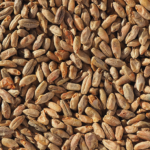
Spelt is another less commonly used grain. Spelt is actually an ancestral form of wheat that fell out of favour compared with modern varieties. Used in brewing, it’s a huskless grain like rye (so watch out for a stuck mash) and gives a nutty flavour with a touch of acidity, which goes very well in saisons and farmhouse ales.
Sweet sweet sugar
Next time we go beyond grains to learn about sugars and malt extracts. Sweet!


